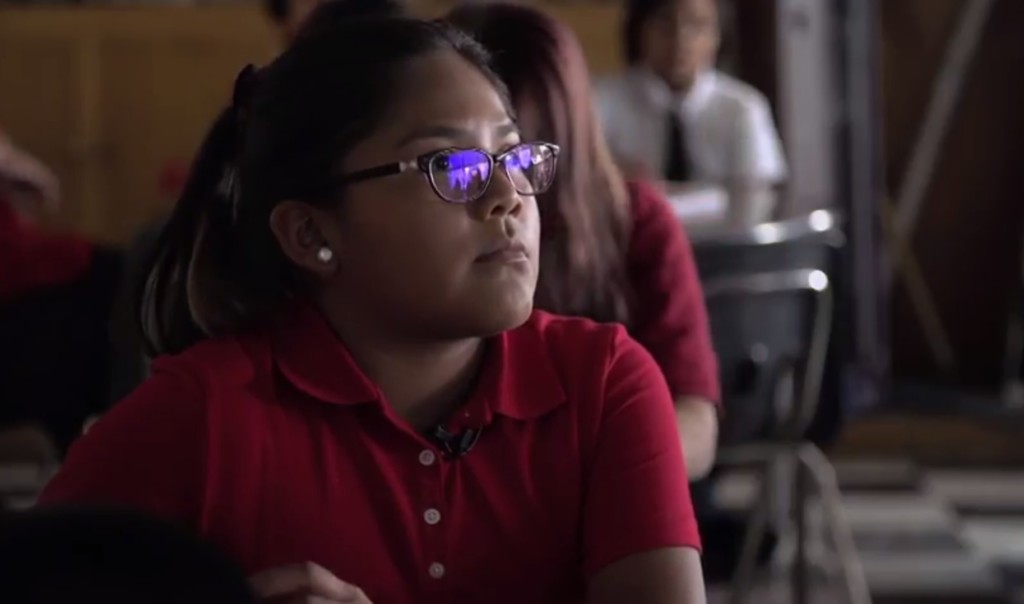
A 1928 report called them “grossly inadequate.” Forty years later, Sen. Ted Kennedy called them a “national tragedy.” Last year, outgoing U.S. Education Secretary Arne Duncan called them “utterly bankrupt.” Those grim assessments of the federal government’s efforts to educate Native American children were cataloged last fall by a Politico investigation, as part of a series examining the struggles of obscure federal agencies.
The Bureau of Indian Education runs 184 schools that serve a fraction of the country’s more than 640,000 native students. The bureau’s schools have some of the worst academic outcomes in the nation, which has prompted federal lawmakers like U.S. Sen. John McCain, R-Ariz., to try to redefine public education on tribal lands.
“When we relegated our Native Americans — our original citizens — to reservations, we made certain promises,” McCain says in a short film released this week by the American Federation for Children, a school choice advocacy group. “One of those promises was a quality education. They have not received it.”
McCain is sponsoring federal legislation that would make education savings accounts available to more Native American students.
He says it’s time to allow “non-traditional efforts” to offer them better educational options. Throughout America’s history, educators have launched non-traditional schools to serve marginalized groups, from the children of migrant farm workers to African-Americans living under Jim Crow segregation, who were poorly served by the existing public education system, or excluded from it altogether.
The new mini-documentary, “America’s Underdogs,” highlights some of those efforts on Arizona’s tribal lands. Those include the STAR School, an off-the grid, solar-powered charter school that teaches Navajo culture, and the St. Michael Indian School, a century-old Catholic institution where, according to the film, 99 percent of native students graduate.
In a bid to make those options available to more students, Arizona recently expanded its ESA program to include students on tribal lands, and more than 100 applied to receive scholarships that can help them pay for tuition, textbooks and other education-related expenses at schools of their choice.
The idea behind McCain’s bill is simple: Allow students attending schools run by the federal bureau to participate in state-run education savings account programs. Those students are currently excluded in Arizona. If the Native American Education Opportunity Act becomes law, it could also extend ESAs to native students in Florida, Mississippi, Tennessee and Nevada (which are home to bureau-run schools and have their own scholarship programs), as well as other states that decide to offer similar programs in the future.
An in-depth report by The 74 finds the agency that runs the schools is among the chief critics of the proposal.
Outside of Congress, there is considerable opposition. The BIE, which is overseen by the Bureau of Indian Affairs in the Interior Department, is firmly against it. Most of the schools the agency operates are very small, Lawrence Roberts, acting assistant secretary for Indian affairs at the Interior Department, said at an April Senate hearing.
Taking, say, four third-graders out of a class of 15 raises the per-pupil costs for those remaining students, he said.
“A lot of our schools are small schools, and [we] appreciate the goals that you’re trying to put forward, but the impacts on the students that are in BIE schools is concerning,” he said.
McCain’s bill, which he says is still being refined, would allow students to receive 90 percent of the federal funding that would have gone to their education in a BIE school, or the amount their state scholarship program would set aside for them, whichever is less. In other words, if could produce savings that could be reinvested in bureau-run schools in desperate need of reorganization and repair.
The producers of the new film visit one such Arizona institution, the dilapidated Little Singer Community School. A Diné culture and language teacher, Mary Jimmie, says the roofs leak, and her students know to grab buckets every time it rains. That prompts Carlyle Begay, a Democrat-turned-Republican state lawmaker who championed ESA expansion in Arizona, to observe that educators in BIE schools are already forced to do a lot with a little.
“With what you have,” he says to the teacher, “you’re making the most of it.”


